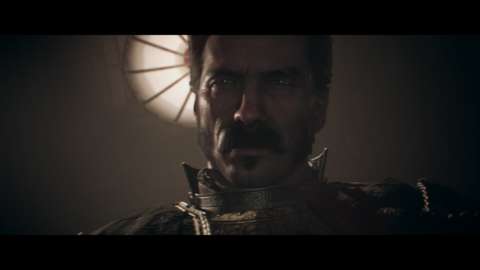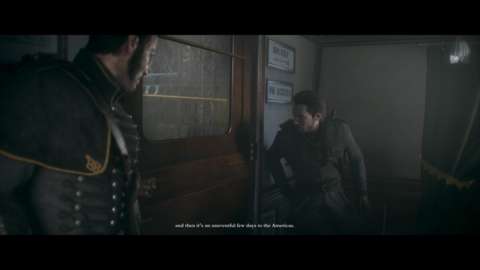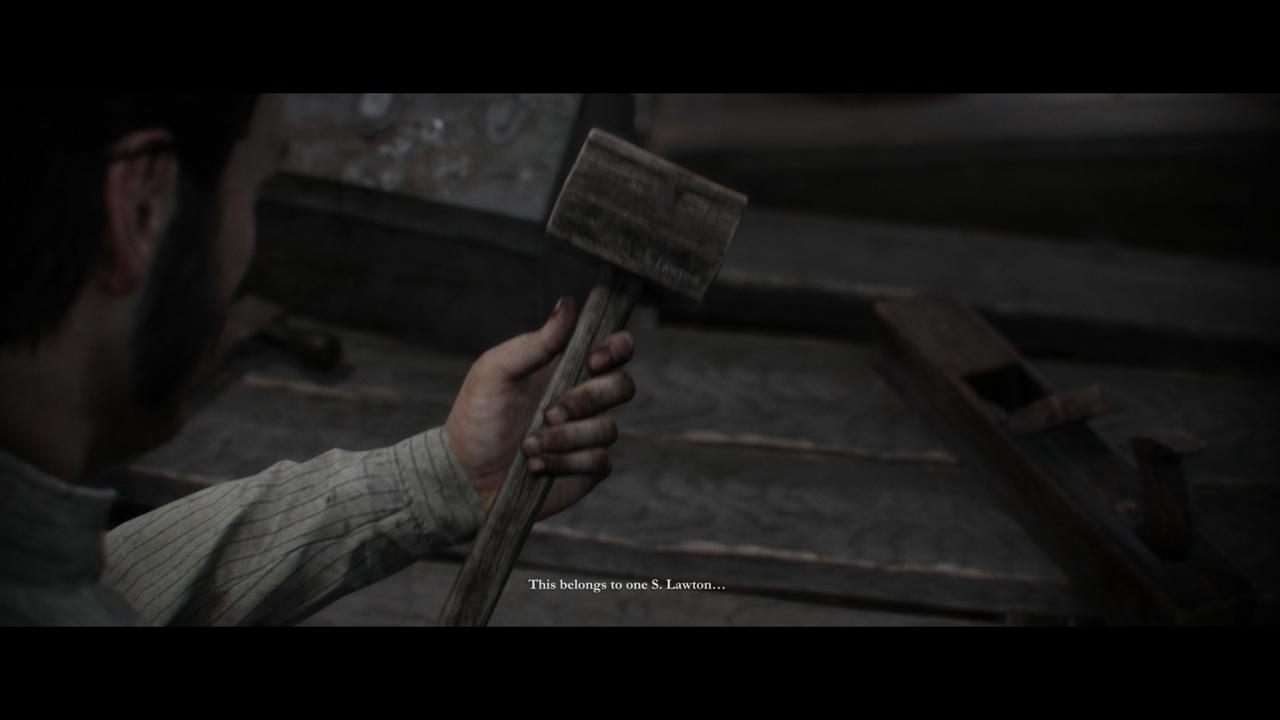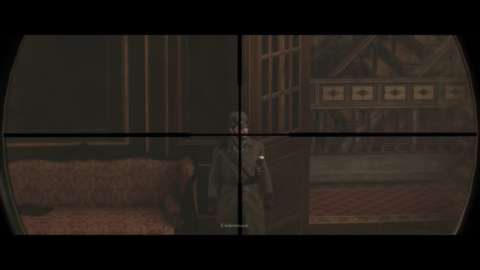The Order: 1886 is a torturer and a tease. It promises you a circuitous story populated with near-immortal knights, it promises you exciting encounters with snarling werewolves, it promises you clever weaponry the likes of which you rarely see in video games. It dangles these hopes in front of you and then yanks them away, reneging on one promise after another, letting you hold that precious toy in your hand and then denying you the chance to maintain the thrill. The Order is cruel in the way it plays with your expectations, taking a promising premise and then sucking out much of the energy with boring cutscenes, an ending wholly devoid of closure, and shooting-gallery action sequences.
"Boring" is the best word to describe The Order in general, actually. That this third-person action game turns a parade of steampunk imagery and Arthurian legends into a dull stew of modern games' most tiresome cliches is quite a feat, though hardly one worth celebrating. It is (as you probably guessed) 1886, and you are Grayson, otherwise known as Galahad, one of the Knights of the Round Table. It is a time of trouble: common citizens have begun to rebel against the gentry, possibly allying with a race of werewolves the game alternately refers to as lycans and half-breeds. It's a brilliant setup, ripe with possibilities. You look to the sky and see zeppelins hovering overhead; you look to the armory, and you find a young Nikola Tesla ready to introduce you to clever armaments. That such a world could be so lifeless is unfathomable.

Yet The Order turns the mystical into the mundane. You face lycans early on, leaping out of the way and shooting them down before killing them off for good by plunging a knife into them. And then they are cast aside for hours until the half-breeds are barely a memory. The Order pulls them out of hiding a few more times, though the circumstances are highly controlled, and conclude with the kind of anticlimax that becomes the game's calling card. The most dramatic of these few battles end with quick-time focused snoozes that betray the very idea of confronting such beasts. As for the nature of the lycans--where they come from, what their presence has meant for humanity, how humans could ally with such creatures--most of that is left to your imagination. Developer Ready at Dawn doesn't address the most interesting aspects of its own ideas.
Instead, the story focuses on its stale protagonists, who sit and argue at the round table every so often while getting to the bottom of the rebel plot. What a shame that interesting supernatural and social elements would be sidelined in favor of boardroom shenanigans, particularly given the light character development. I applaud the cast: the voice acting is brilliant, far better than the material deserved, and it is the acting talent alone that invested me in the characters' fates. The soundtrack, thick with cellos and violas, also rises above the blandness, but by the time the finale and its predictable quick-time events arrive, it is too late to squeeze emotion from this dry turnip. The credits roll after the button press that serves as an ending, and vital story threads are left dangling in the wind. Perhaps the Order: 1886 means to hint at a sequel, but whether or not that was Ready at Dawn's intention, it's a disrespectful end to a plodding story. This may have been a fine close to the second act of a three-act story, but it's a rude sendoff to anyone hoping for explanation or reason.


How bizarre, then, that The Order is so focused on its narrative. During the initial sequences, you may assume that it is more Heavy Rain than Uncharted: you respond to threats by pressing the right buttons when prompted. As it happens, The Order is divided more or less equally into four disparate pieces: cutscenes, QTEs, walking around, and shooting. In time, the game strings these features into poorly-paced sequences that have no sense of rhythm. It is the modern action game personified: This is the part where I walk for three minutes, and now comes the short bit where I have to pick a bunch of things up and look at them, and then comes the brief shooting part that practically ends before it begins.
Walking, looking, and shooting aren't bad on their own, of course. What makes such basic mechanics so predictable and rote in The Order is how they are used. When the game forces you to holster your weapon and walk at a snail's pace, you may expect it to build tension or to develop its characters. Instead, The Order becomes an exposition machine, dropping basic plot points until you either open the door that leads to the next ultra-linear stage of the ultra-linear level, or another character does it for you.
The sequences in which you examine your surroundings looking for clues are even more tedious. You trudge about a room, picking up objects and looking at them, perhaps even turning them over in your hands before setting them down. In a few instances, the game might identify a detail of interest, and you have to press a button to continue, though the overall goal is typically to pick up everything in the vicinity until you trigger the next event--and in at least one case, you aren't even the one to discover the pertinent information, making all of that monotonous strolling aggravatingly pointless. A few weapons aside, you're rarely looking at anything of interest: old photographs of characters you barely know (if at all), letters that provide the tiniest morsel of backstory, and so forth. That The Order is so in love with its own object models is almost laughable: You pick up minor knick-knacks and lovingly rotate them as if you have discovered the Holy Grail. Yes, this model ship is lovely, but was the self-congratulatory time-padder necessary?

I presume that The Order: 1886 wishes to build its world by demanding you admire the details, but Ready at Dawn needn't have tried so hard to point out how pretty their art is: it is simply pretty, full stop. The game has a few of the standard tricks up its sleeve to gloss over the occasional flaws: motion blur, a subtle film grain effect, overzealous depth-of-field effects, and the such. It's difficult to overlook The Order's tonally consistent aesthetics, however: It is fully committed to its style. From a bridge's vantage point, you wield an electrically charged cannon while gazing upon a smoky Victorian London. The bridge is dotted with iron carriages, some still sturdy, and some ravaged by the ongoing firefight. Rococo flourishes adorn the Knights' chamber: walls decorated with gold leaf, floors embellished with Latin script, flickering candles embedded within serpentine sconces. The Knights' weathered faces aren't quite beautiful, but they are remarkably human; Each of the Lord Chancellor's grimaces and squints betray a soul-crushing history you wish you could have partaken in.
The action is almost an afterthought, given all the talking, the walking, and the quick-time events, few of which complement onscreen motion in the manner of Telltale Games' best QTEs. It's a shame that The Order evokes Heavy Rain so early in its six-hour play time, because the comparison does not work in this game's favor. The Order clearly has cinematic aspirations, regardless: The loose camera hews close behind you, to the point where you can not often see much of the battlefield once you have taken cover. The game is at its best when it allows itself to be a shooter, which is what makes its failings all the more disheartening. The thermite rifle is one of the most interesting weapons in recent memory, letting you fire a round of magnesium ammo and then ignite it with a rush of air. What a blast it is to mess with such a unique firearm--and what a heartbreaker to have such grossly limited use of it. The same is true of the previously mentioned cannon: It is ripped from your hands all too quickly and replaced with less-interesting pistols and carbine rifles.

Those weapons function just fine, at least. The level design is functional, too, but uninspired. You know a turkey shoot is about to begin as you enter an area and see all the obvious cover spots--and then the turkeys appear, right on schedule, ready to die at your hands. Expectedly, such predictability breeds apathy. Grenade-lobbing supersoldiers aside, it's all too easy to mow down the opposition, making the blacksight mechanic, which allows you to temporarily slow down time and pelt foes with bullets, all but unnecessary on medium difficulty. There's a system in place for recovering if you are downed in combat, but it, too, is superfluous: should you fall, a rebel soldier almost always lands a killing shot.
All of these gameplay tropes are then shoved together into herky-jerky levels that end just when you think they might gain momentum. The only individual sequence lengthy enough to find a rhythm is a later stealth level, though it's far too simple to inspire wishes for more sneaky sections. What, then, to make of The Order: 1886? It is, at best, perfectly playable, and lovely to look at and listen to. But it is also the face of mediocrity and missed opportunities. A bad game can make a case for itself. A boring one is harder to forgive.